
Provides an overview of research on reading engagement and motivation. Works as a brief and good introduction to this topic.
- Subject:
- Professional Learning
- Material Type:
- Reading
- Provider:
- Utah State Board of Education
- Date Added:
- 06/08/2023

Provides an overview of research on reading engagement and motivation. Works as a brief and good introduction to this topic.
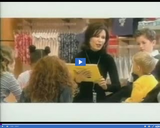
Mr. George Baker, written by Amy Hest, illustrated by Jon J Muth. Harry sits on the porch with 100 year old Mr. George Baker who can dance and play the drums but goes to school, just like Harry, so he can learn to read.
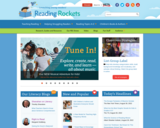
ReadingRockets.org provides free resources about teaching children to read and helping kids who struggle. You’ll find a hundreds of articles on teaching reading, classroom strategies, in-classroom video, parent tips in 11 languages, video interviews with top children’s book authors, a daily news service, and much more.
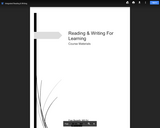
Improves reading through work on vocabulary development, motor skills, comprehension and some reading rate improvement. Instruction includes sentence structure, paragraph and essay development, and written expression. Students can expect to increase working vocabulary and improve skills in basic communications.
Instructor guide: http://bit.ly/2oumRrX

A brief overview of this topic (disciplinary literacy) including links to additional professional development and classroom resources.
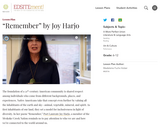
This lesson plan is the ninth in the "Incredible Bridges: Poets Creating Community" series. It provides a video recording of the poet, Joy Harjo, reading the poem "Remember." The companion lesson contains a sequence of activities for use with secondary students before, during, and after reading to help them enter and experience the poem.

Download, complete, and submit this form for Evidence of Preparation and Planning.

Repeated Reading According to research, it is recommended that preschool teachers prepare children for later reading instruction. They can do so by introducing the five critical building blocks for literacy including phonological awareness, letter identification, vocabulary knowledge, print concepts, and a positive attitude toward reading (Henry, 2019). (Early Learning Standards, ELA Introduction)

This page includes links to the varied Tiers of instruction and defines each one.

An excerpt from the online open access source Writing and Critical Thinking Through Literature, this chapter explores how to conduct a literary analysis of creative nonfiction.
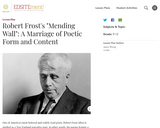
Studying Robert Frost's "Mending Wall," students explore the intricate relationship between a poem's form and its content.

Provides some activities on teaching sentence fragments as intentional, rhetorically useful possibilities for writers.

This article details the purpose behind screening measures for reading difficulties in grades 4 - 12. It also discussed the tiered nature of response to intervention in addition to recommendations for improving Tier I instruction.

This article provides both a rationale for vocabulary instruction to build reading comprehension and some specific strategies for choosing and teaching vocabulary connected to reading. It has a specific section on teaching vocabulary with word parts.

This document provides a brief overview of adolescent literacy as a separate and distinct skill from childhood literacy and the importance of continuing literacy instruction into higher grades (4-12). This source also includes links to several important reports on adolescent literacy, e.g. Reading Next, Writing Next, etc.

This text is a collection of over 300 strategies that teachers can integrate into a variety of approaches to reading instruction. The author includes clear descriptions of each strategy, as well as effective teaching tips when applying each strategy.

This article helps teachers consider what it means for a text to be culturally relevant. The author highlights three steps to cultural authenticity for teachers to consider in text selection.

In this text, the author discusses the principles of backwards design within the context of English language arts. Chapters address a variety of issues and challenges teachers will face, including decisions about unit planning, assessment, and text selection.
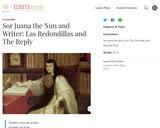
Sor Juana Ines de la Cruz, the first great Latin American poet, is still considered one of the most important literary figures of the American Hemisphere, and one of the first feminist writers. In the 1600s, she defended her right to be an intellectual, suggesting that women should be educated and educators and accusing men of being the cause of the very ills they blamed on women.

In this post, literacy stages for adolescent students are identified, along with the instructional needs and practices associated with them. It is important to acknowledge a learner’s place on a developmental continuum, but also imperative that adolescent learners are not held back from challenging and authentic texts and tasks because of their identified stage. Knowing how to equip intermediate and advanced stage readers with the tools necessary to unlock meaning on the word and text level is necessary as the demands of these texts and tasks shift in content, purpose, and context.